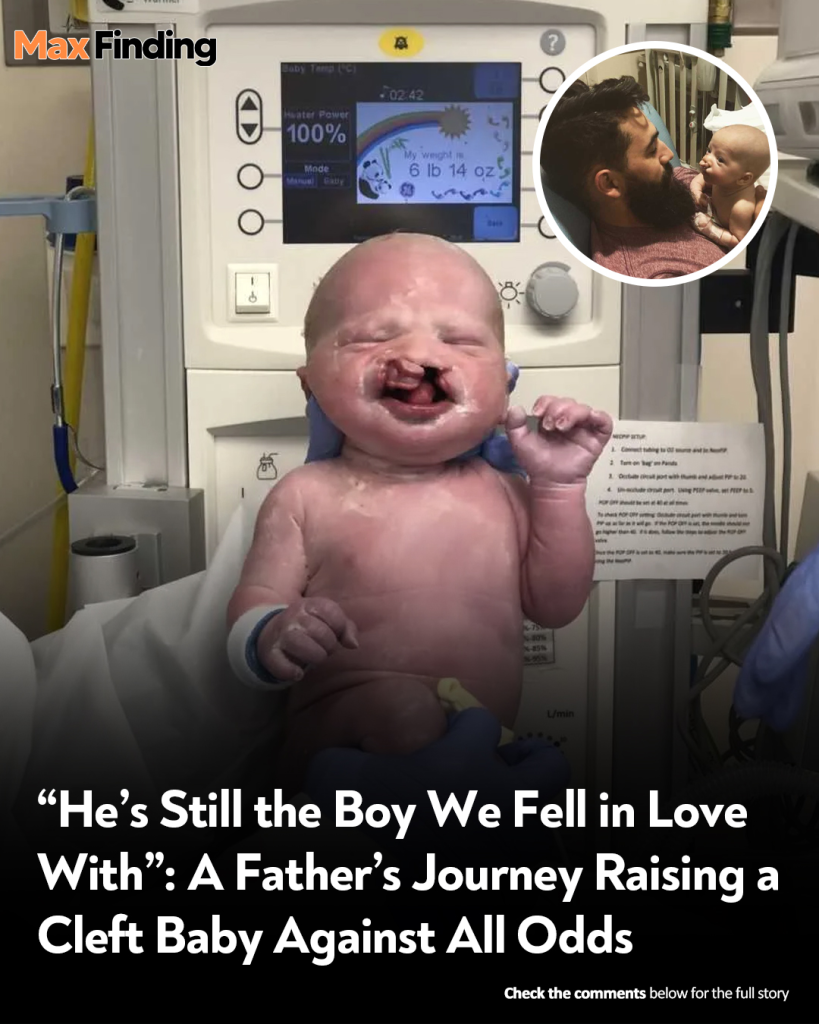The air in the delivery room hummed with a joyful anticipation that felt almost electric. Matt squeezed his wife’s hand, their shared smiles a silent language of excitement. This was it—the moment they had been waiting for, the culmination of nine months of dreams, plans, and boundless love for a person they hadn’t even met. The final push was a surge of effort and emotion, and then, the world seemed to hold its breath as their son entered the world.
But the celebratory cheers Matt expected to erupt never came. Instead, a thick, unnerving silence descended upon the room. The nurses’ and doctor’s movements became clipped, their expressions guarded. Matt’s heart hammered against his ribs. He leaned in, trying to catch a glimpse of his son, a primal fear beginning to eclipse the joy. When the doctor finally turned to him, the words spoken were clinical and precise, yet they landed like a physical blow: his son was born with a bilateral cleft lip and palate.
In that instant, Matt’s world tilted on its axis. The dreams he had built of a “perfect” child and a “normal” life seemed to shatter. He looked at his newborn son, and all he could see was a future filled with surgeries, medical challenges, and societal judgment. The silence in the room was a reflection of the silence in his own mind—a void where joy had been, now filled with a creeping dread. He felt a wave of guilt for his own shock and fear, a tangled mess of emotions that left him feeling isolated and adrift.

The first few days were a blur of hushed conversations with specialists and the overwhelming challenge of trying to feed a baby who couldn’t latch. Matt and his wife felt like they were on a lonely island, watching other new parents coo over their babies while they grappled with feeding tubes and the daunting road map of medical procedures that lay ahead. The fear was a constant companion, whispering doubts in the quiet of the night. Would their son be able to speak clearly? Would he be bullied? Had they somehow failed him before his life had even truly begun?
The turning point wasn’t a grand, cinematic moment, but a small, quiet one. In the middle of another difficult feeding, Matt looked into his son’s eyes. He saw not a “defect” or a “problem,” but a tiny, resilient human fighting with all his might. He saw a flicker of the same determination and spirit he saw in his wife. In that gaze, the fear that had held Matt captive began to loosen its grip, replaced by a fierce, protective love that was more powerful than any uncertainty.
That love became their anchor. They dove headfirst into understanding everything they could about their son’s condition, becoming his fiercest advocates. They found a community of other families who had walked the same path, their stories a beacon of hope that illuminated the way forward. The journey was far from easy. It was a grueling marathon of surgeries, recoveries, and therapy sessions. With each procedure, they witnessed their son’s incredible strength. He endured pain and discomfort with a quiet courage that left them in awe.
Slowly, their perspective began to shift. They stopped seeing their son’s cleft as a mark of imperfection and started seeing it as a testament to his unique journey. It was a part of his story, a symbol of his resilience. The scars from his surgeries were not something to be hidden, but reminders of the battles he had won.
Today, their son is a vibrant, happy child with a smile that can light up a room. His laughter is the sweetest sound Matt has ever heard. The fear and silence that once filled the delivery room are now distant memories, replaced by the joyful noise of a family bound by a love that was tested and proven to be unconditional. Matt learned that the life he had feared was not a lesser life, but a different one—a richer one, filled with a depth of love, compassion, and gratitude he never could have imagined. His son had taught him the most important lesson of all: that true perfection lies not in a flawless appearance, but in a spirit that refuses to be broken.